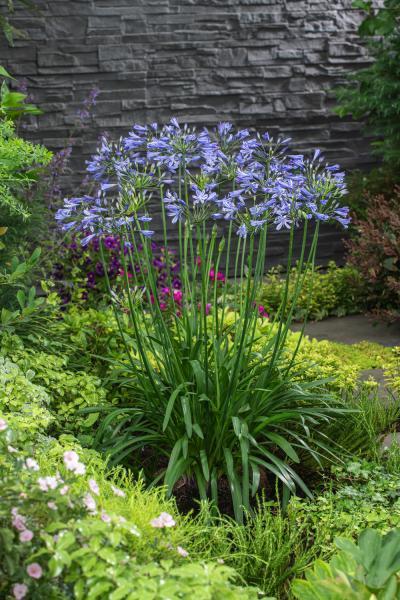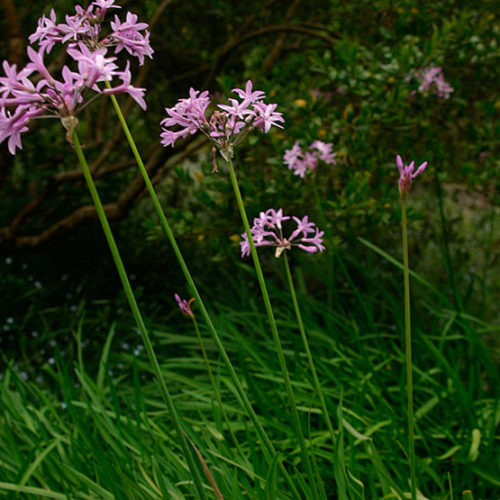Expanding Agapanthus: A Complete Guide to Beautiful Blooms
Expanding Agapanthus: A Complete Guide to Beautiful Blooms
Blog Article
Unleashing the Secret to Successful Agapanthus Cultivation: Advice for a Flourishing Garden
In the realm of gardening, growing agapanthus effectively requires a strategic technique that includes various elements of plant treatment. By understanding the subtleties of agapanthus growing, one can create an atmosphere where these plants thrive and grow generously.
Planting Agapanthus: Finest Practices
When planting Agapanthus, correct soil prep work is important for ensuring effective growth and advancement of these gorgeous blossoms. Agapanthus, typically called Lily of the Nile or African lily, flourishes in well-draining dirt with a slightly acidic to neutral pH degree - Agapanthus. Prior to planting, it is critical to change hefty clay soils with natural issue such as compost or peat moss to improve water drainage and provide vital nutrients for the plants
To grow Agapanthus, pick a location that gets complete sunlight to partial shade, as this will advertise healthy development and bountiful blooming. Dig an opening twice the size of the plant's root sphere and position the Agapanthus at the exact same depth it was previously expanding. Delicately backfill the opening with dirt, pressing down strongly to get rid of any air pockets around the origins.
Water the freshly grown Agapanthus thoroughly and remain to keep the soil uniformly wet, especially during the plant's active growing period. Agapanthus. Using a balanced fertilizer once a month can additionally sustain the plant's development and flowering. By adhering to these ideal practices for growing Agapanthus, you can create a spectacular screen of these fascinating blossoms in your yard
Ideal Soil Conditions for Agapanthus
For optimal growth and flowering success of Agapanthus plants, guaranteeing the dirt problems are perfect is important. Agapanthus prospers in well-draining dirt with a somewhat acidic to neutral pH level ranging from 6.0 to 7.0. This kind of soil enables sufficient water drainage, avoiding waterlogging which can result in root rot. To improve soil drain, think about adding organic issue such as garden compost or peat moss when preparing the growing site. Additionally, Agapanthus likes soil that is rich in nutrients, so incorporating a balanced plant food throughout the expanding period can advertise healthy growth and vibrant blossoms.

Watering and Fertilizing Tips
To ensure healthy and balanced development and lively flowers, proper watering and fertilizing strategies are essential for successful Agapanthus farming. Agapanthus plants profit from regular watering, especially throughout the growing season.
When it comes to fertilizing Agapanthus, a well balanced plant food with equal parts nitrogen, phosphorus, and potassium can be used in the spring to promote healthy and balanced development and blooming. Slow-release fertilizers are ideal for giving nutrients slowly over an extended duration. Prevent over-fertilizing, as this can lead to excessive vegetation growth at the expenditure of flowers.
Additionally, integrating raw material like garden compost right into the soil can enhance nutrient degrees and improve dirt structure, assisting in the total health of the Agapanthus plants. By adhering to these watering and fertilizing pointers, gardeners can guarantee their Agapanthus plants flourish and generate sensational screens of blossoms.
Pruning and Deadheading Strategies
Proper trimming and deadheading strategies play a critical duty in keeping the health and visual appeals of Agapanthus plants, enhancing the important methods of watering and feeding for successful growing. Trimming Agapanthus involves getting rid of spent blossom heads, dead or yellowing leaves, and total shaping of the plant to advertise much better development. Deadheading, the procedure of click resources removing faded blossoms, not only improves the plant's look but likewise motivates more blooming.
When deadheading Agapanthus, it pop over to these guys is a good idea to trim off the blossom stem at the base using sharp, clean shears. This procedure reroutes the plant's power from seed manufacturing back into origin and vegetation development, promoting a healthier and much more durable plant. Routine deadheading can expand the blooming period of Agapanthus and stop self-seeding, which can bring about congestion.
In terms of pruning, Agapanthus generally advantages from a light trim after flowering to clean up the plant and urge fresh growth. Reducing the spent blossom stems and getting rid of any kind of damaged or dead foliage helps maintain the plant's vitality and total look. Nevertheless, it is vital to stay clear of reducing into the crown of the plant, as this can compromise its health.

Protecting Agapanthus From Vermins and Diseases
Carrying out reliable bug and disease administration approaches is vital to safeguarding the health and wellness and vigor of Agapanthus plants in cultivation. One usual insect that impacts Agapanthus is the Agapanthus borer, a caterpillar that passages into the plant, triggering damages to the fallen leaves and flowers.
In enhancement to insects, Agapanthus are prone to conditions such as root rot and fungal leaf areas. These concerns can often be avoided by guaranteeing correct drain and staying clear of overwatering. Impacted components of the plant must be without delay gotten rid of to avoid more spread if Clicking Here indications of disease show up. Fungicides might also be made use of as a therapy action, complying with the producer's guidelines carefully. By remaining attentive and attending to bug and illness concerns without delay, garden enthusiasts can aid their Agapanthus prosper and prosper.

Verdict
Finally, effective cultivation of agapanthus needs correct planting methods, excellent soil problems, adequate watering and fertilizing, routine trimming and deadheading, and protection from conditions and pests. By complying with these tricks and suggestions, gardeners can make sure a prospering garden filled with stunning agapanthus blossoms. Agapanthus. Bear in mind to maintain regular treatment and focus to information to advertise the wellness and longevity of these spectacular plants
When planting Agapanthus, proper soil preparation is essential for ensuring successful growth and development of these beautiful blossoms.Water the freshly planted Agapanthus thoroughly and continue to keep the soil uniformly damp, particularly throughout the plant's active growing season.For optimal development and growing success of Agapanthus plants, making certain the soil conditions are optimal is vital. When growing or hair transplanting Agapanthus, make sure the soil is well-prepared to offer the required foundation for the plants to establish themselves successfully. One usual parasite that impacts Agapanthus is the Agapanthus borer, a caterpillar that tunnels into the plant, creating damages to the flowers and leaves.
Report this page